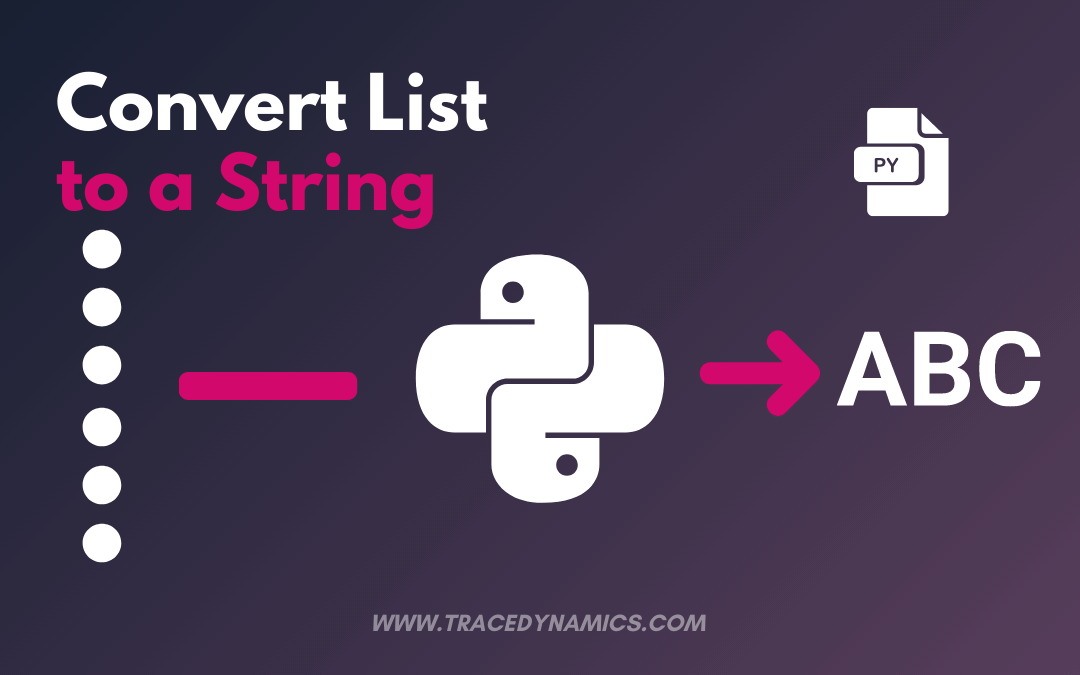Introduction
Converting lists to strings is a fundamental operation in Python, crucial for data manipulation, serialization, and interoperability. This guide explores various methods, each with its advantages and limitations, empowering you to choose the most suitable option for your specific needs.
Methods for Converting List to String
Using join()
This is the most common and efficient method for joining elements with a specified separator.
- Basic Usage: ‘ ‘.join([‘apple’, ‘banana’, ‘cherry’]) will return “apple banana cherry”.
- Custom Separator: ‘, ‘.join([‘apple’, ‘banana’, ‘cherry’]) will return “apple, banana, cherry”.
- Nested Lists: Flatten the nested list before joining.
Using map()
This method applies a function to each element in the list, often used for converting non-string elements.
- Numeric Lists: ”.join(map(str, [1, 2, 3])) will return “123”.
- Complex Data Types: Define a custom function to handle specific data types.
- Flexibility: Allows custom transformations before joining.
Using List Comprehension
This concise and Pythonic approach combines filtering and joining in one expression.
- Basic Example: ‘ ‘.join([str(x) for x in [‘Python’, ‘is’, ‘fun!’]]) will return “Python is fun!”.
- Advanced Usage: Utilize conditional logic within the comprehension.
Using Iteration
This method offers fine-grained control over each element in the list.
- Simple Loop: Iterate through the list and build the string progressively.
- Complex Logic: Add conditions and custom operations based on specific requirements.
Choosing the Right Method
- For large lists: join() is generally the most efficient choice.
- For custom conversions: map() or list comprehension offer greater flexibility.
- For readability or complex logic: List comprehension can be concise and clear.
- For fine-grained control: Iteration allows for handling specific cases.
Additional Considerations
- Mixed data types: Use map(str, my_list) to convert non-string elements.
- Nested lists: Flatten the list first or use recursion for deeper nesting.
- Performance: join() is typically faster, but list comprehension can be similar when readable code is prioritized.
Best Practices
- Use descriptive variable names and comments for improved code readability.
- Choose the most appropriate method based on the specific task and context.
- Consider the trade-offs between efficiency and readability based on your needs.
- Test and benchmark your code for optimal performance in real-world scenarios.
Conclusion
Mastering different techniques for converting lists to strings empowers you to handle various data types and scenarios efficiently. By understanding the strengths and weaknesses of each method, you can choose the best approach for your specific needs, ensuring robust and flexible data manipulation in your Python code.
Further Resources
Frequently Asked Questions (FAQs)
What is the most efficient way to convert a list to a string in Python?
The `join()` method is typically the most efficient way, especially for larger lists.
Can `map()` be used with lists of non-string types?
Yes, `map()` is particularly useful for converting each element to a string before joining them.
Is list comprehension faster than using `join()`?
List comprehension and `join()` are often similar in performance, but `join()` can be more readable and concise.
How can I add a separator between elements when converting a list to a string?
You can specify the separator in the `join()` method, like `’ ‘.join(my_list)` for space or `’,’.join(my_list)` for a comma.
Can I use these methods with lists of mixed data types?
Yes, but you may need to convert non-string types to strings, typically using `map(str, my_list)`.
Is it possible to reverse the process, i.e., convert a string back to a list?
Yes, you can use the `split()` method on strings to convert them back into lists.
Are these methods specific to Python 3?
These methods work in both Python 2 and 3, with some differences in syntax and behavior.
Can I use these methods for nested lists?
For nested lists, you might need a more complex approach, possibly involving recursion or flattening the list first.
How does list comprehension differ from using `map()`?
List comprehension is more flexible and Pythonic, allowing for additional conditions and transformations, while `map()` is generally used for applying a single function.
Are there any libraries required for these conversions?
No additional libraries are needed; these methods are part of Python’s standard functionality.

